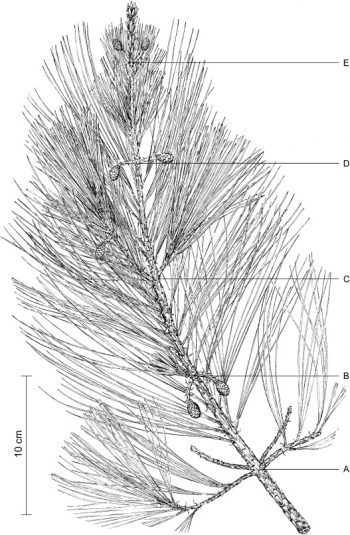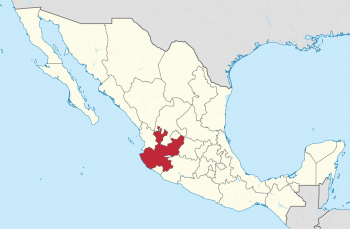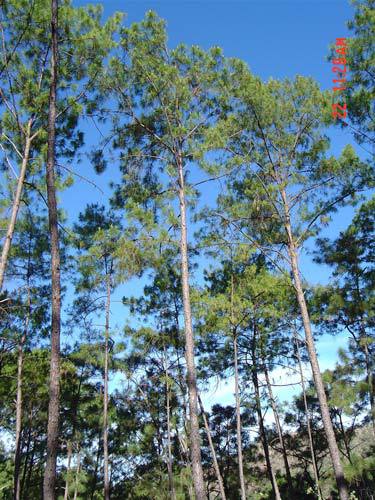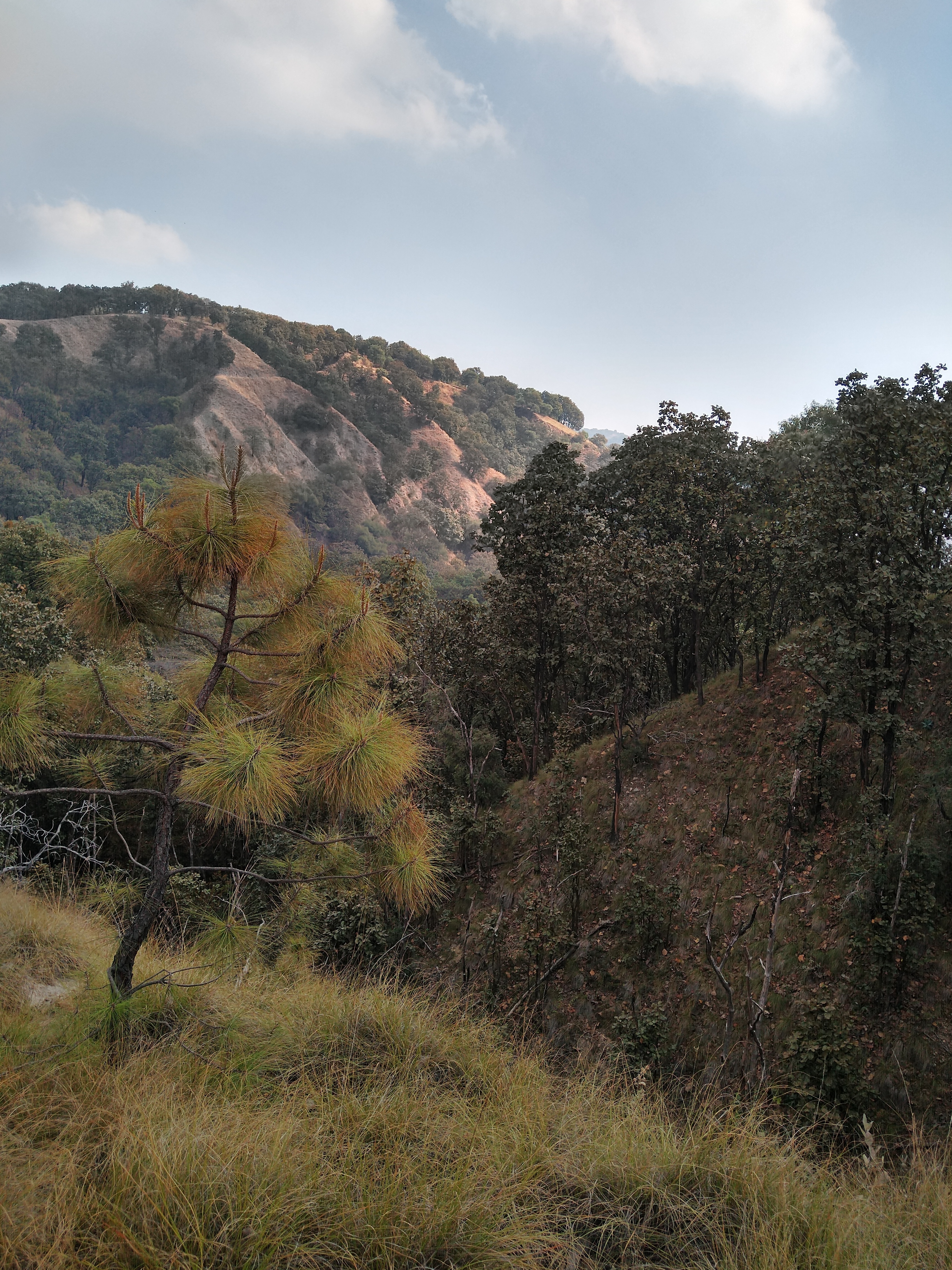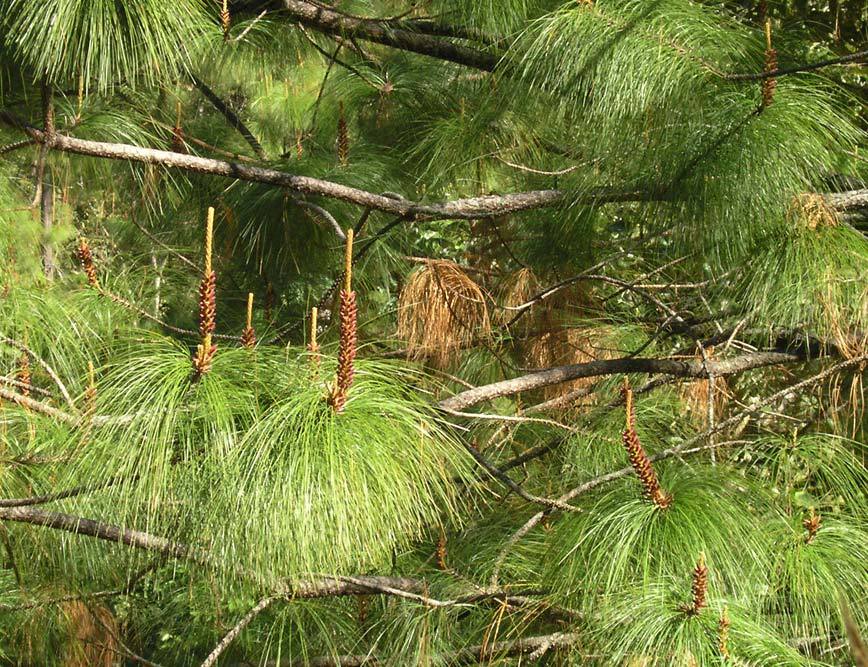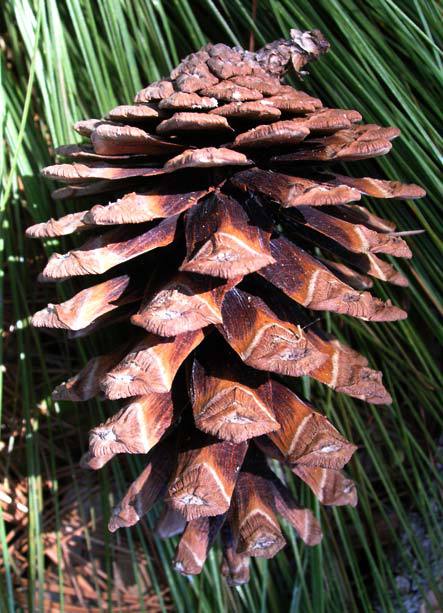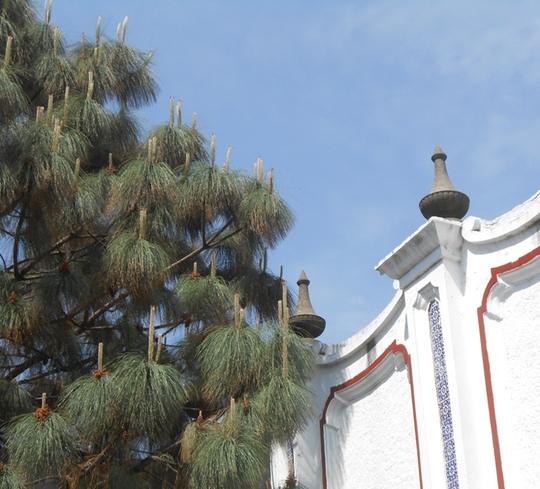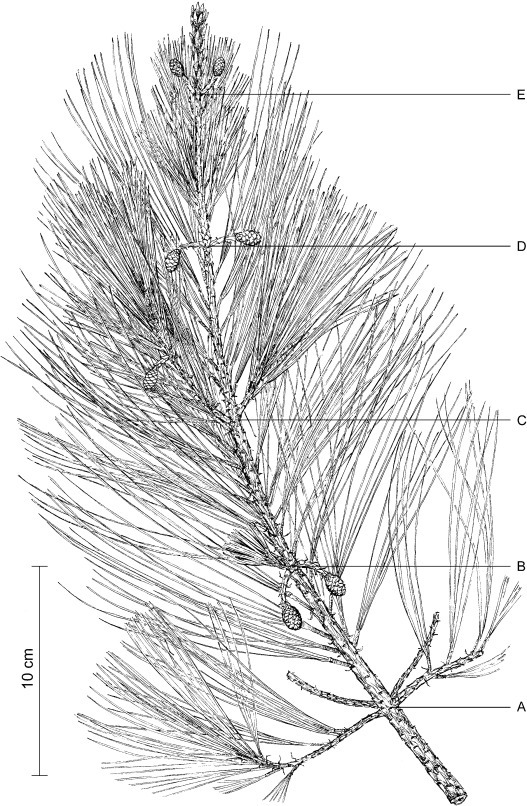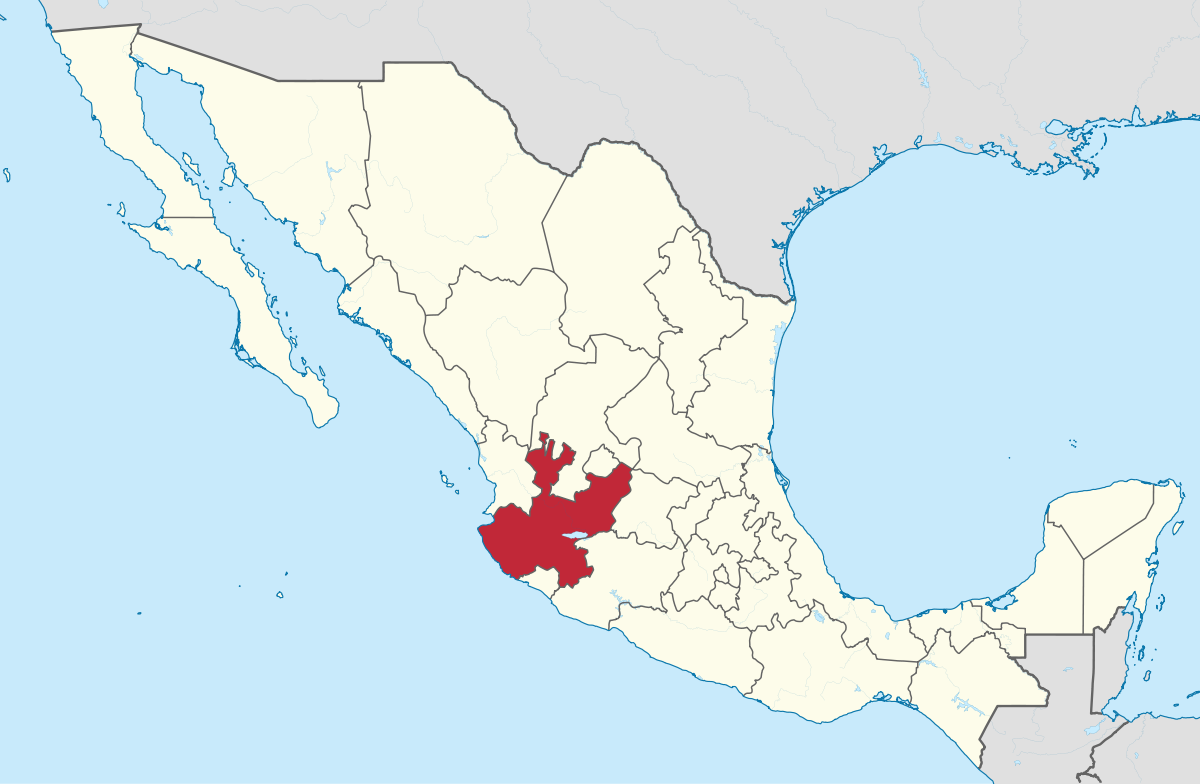subgenus Pinus, section Trifoliae (Duhamel), subsection Australes (Loudon).
Pinus jaliscana, first described in 1983 by Pérez de la Rosa, is commonly known as Jalisco pine, as well as pino de Jalisco in the Spanish language. This pine is native to the mountains of western Jalisco, Mexico, hence the species and common names.
Description. Jalisco pine is an evergreen, coniferous species of tree that grows to mature heights of 65 to 100 feet (20 - 35 m) with a straight trunk, 20 to 32 inches (50 - 80 cm) in diameter, measured at breast height, and an irregularly rounded, open crown with ascending branches.
- Bark on young trees is thin, rough, and reddish in large, loose scales, thickening with age to 0.6 to 1.4 inches (1.5 - 3.5 cm), fissured into longitudinal plates; the bark exfoliates distinctively into large, very thin, 0.02 inch (0.5 mm) plates that accumulates around the bases of old trees.
- Branchlets are long, slender, and flexible; pulvini disintegrate in their 2nd or 3rd year to leave a fairly smooth branchlet.
- Leaves (needles) are borne in fascicles of 4 or 5, light- to yellow green colored, measuring 4.8 to 7.2 inches (12 - 16 cm) long and very slender at 0.02 to 0.016 inch (0.5-0.8 mm) wide, but not drooping. Needles have finely serrate margins, stomata on adaxial and abaxial surfaces, and 2 to 3 resin canals.
- Fascicle sheaths are pale brown, persistent and 0.32 to 0.6 inch (0.8 - 15 mm) long.
- Pollen cones are borne crowded at the end of new shoots, ovoid-oblong to cylindrical shaped, measuring 0.48 to 0.72 inch (12 - 18 mm) long by 0.2 to 0.32 inch (5 - 6 mm) wide, subtended by scarious bracts, and colored purple-yellow turning light brown.
- Seed cones comprised of 90 to 115 seed scales, grow subterminally, single or in whorls of 2 to 3 on 0.28 to 0.6 inch (0.7 - 1.5 cm) long stout, curved, scaly peduncles that remain attached to the fallen cones. Cones are colored purple-red, maturing 2 seasons after pollination to become, at maturity, long-conical, tapering at base and apex. They measure 2.4 to 3.4 inches (6 - 8.5 cm) long and 1.6 to 2 inches (4 - 5 cm) wide when open, ripening in winter and are serotinous.
- Cone scales are hard, strong, and stiff, with flattened, slightly thickened, slightly transversely keeled aphophyses, and a 0.12 to 0.16 inch (3 - 4 mm) wide depressed umbo bearing a very small, early deciduous prickle.
- Seeds are dark brown, 0.16 to 0.24 inch (3.5 - 6 mm) long by 0.08 to 0.14 inch (2 - 3.5 mm), with an articulate pale brown wing 0.48 to 0.72 inch (12 - 17 mm) long and 0.2 to 0.32 inch (5 - 8 mm) wide.
The long, strongly reflexed peduncle, thinly exfoliating bark, and very slender but not drooping needles are distinctive field characters. Farjon and Styles, in
Flora Neotropica Monograph #75 (1997) regard it as very similar to
Pinus herrerae.
The differences are in the fascicles, in
jaliscana there are 4 to 5 needles; in
herrerae, 3; and in seed cones that, in
jaliscana, are twice as large than in
herrerae.
Distribution. This species is native to Mexico - Mexico: western Jalisco: at 19°48' to 20°45'N in tropical and subtropical mountains. Nine populations are identified in the species' range, and are shown on the map at the right. They occur at elevations of 2,200 to 5,000 feet (700 - 1,460 m) above sea level where climate is subtropical, an annual precipitation of 60 to 77 inches (1,500 - 1,935 mm), a November to May dry season, and mean annual temperature 72° to 78°F (22° - 26° C). Preferred soils are granitic, acidic, deep, and well drained. Common sites include north- and west-facing slopes, near stream banks, and other sites where groundwater is available most of the year. It usually occurs in pine-oak ecosystems.
Hardy to USDA Zone 9 - cold hardiness limit between 20° and 30°F (-6.6° and -1.1°C).
